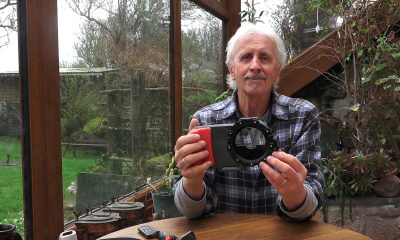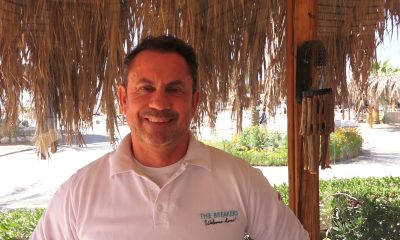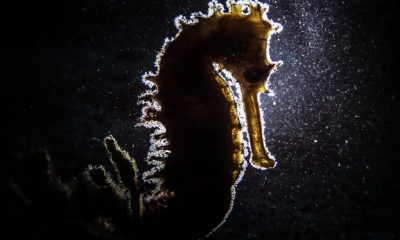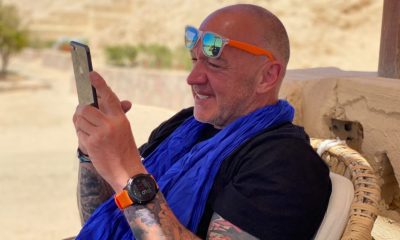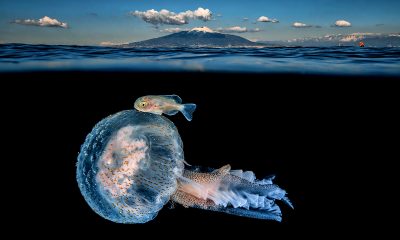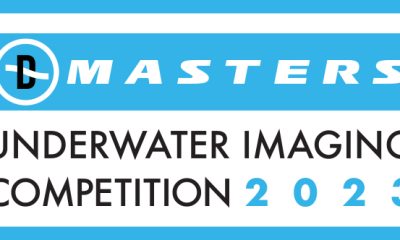News
Scubaverse Underwater Photographer Interview: Thomas Ozanne
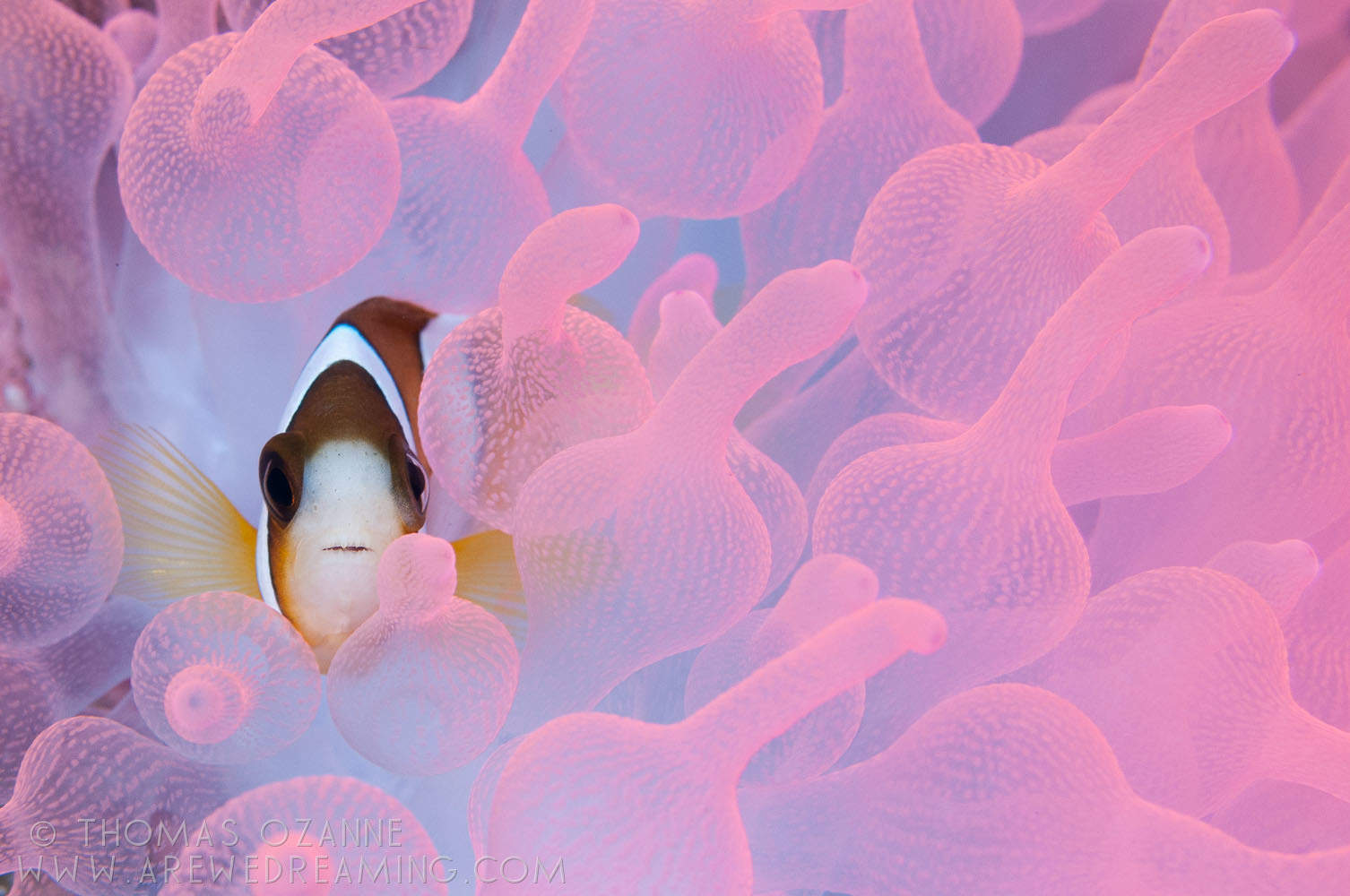
In an ongoing series, Scubaverse.com’s Underwater Photography Editors Nick and Caroline Robertson-Brown talk to underwater photographers from around the world that they admire.
This week’s interview is with Thomas Ozanne.
Nick and Caroline speak to Thomas Ozanne after meeting him at the DEMA show in Las Vegas in 2016.
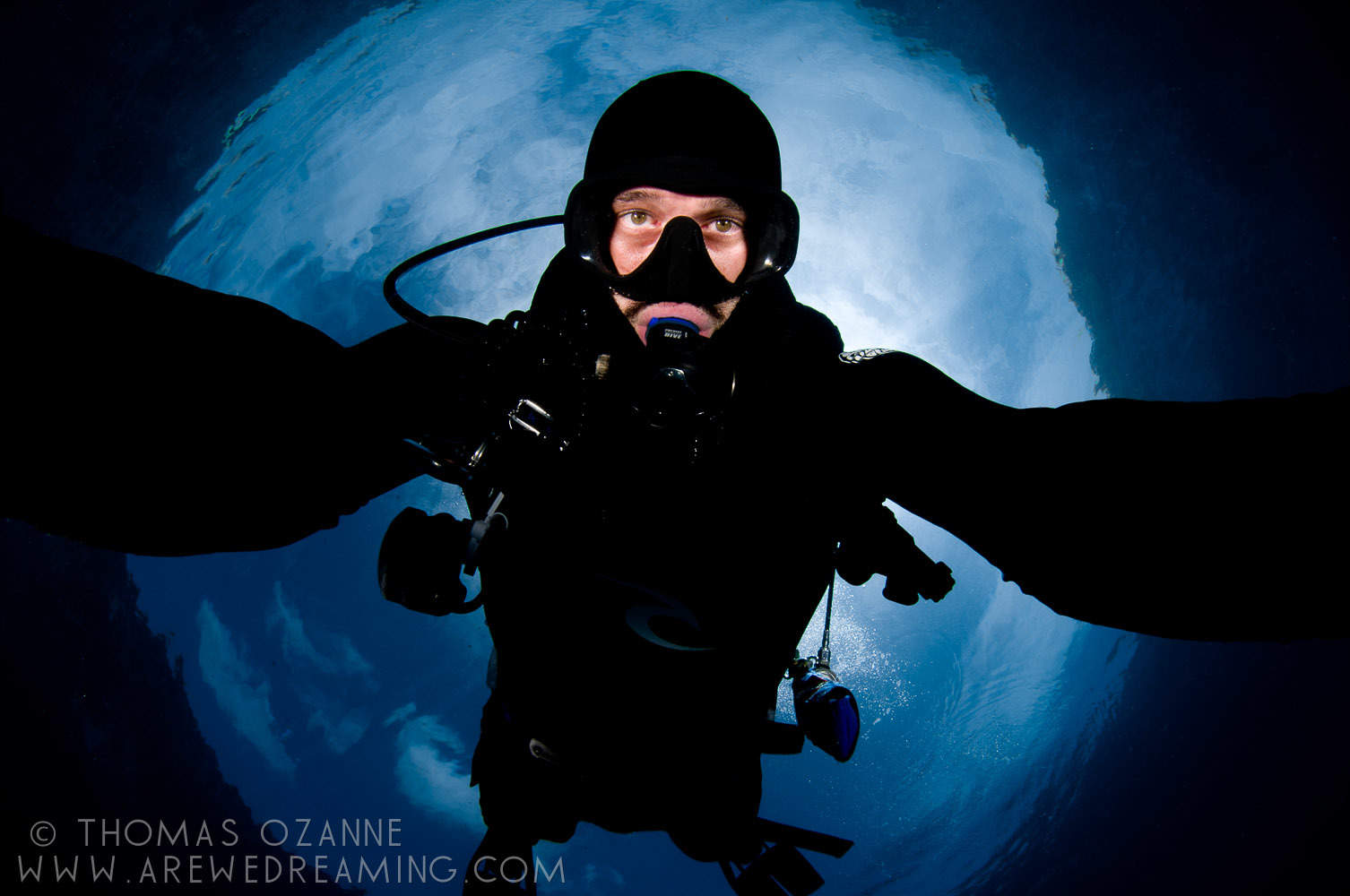
N/C: How did your underwater photography start?
TO: I went on holiday and needed to do something to fill the time so I thought I’d try diving. Fell in love with it immediately. Ended up sticking around much longer than I intended and did my Divemaster course. Almost immediately I landed a job working for the resort I trained with and fairly quickly realised I wasn’t cut out for working the resort reception or taking scuba reviews in the pool. I needed something that could keep me in the water on my own terms and the people I saw around me that had that were making videos, so I took up videography. From there I managed to blag my way in to a job on board a Liveaboard with absolutely no idea what I was doing. After a successful season of shooting videos I realised that it was far too much work (6am till midnight 4 days out of 5 for 6 months) so in the off season I decided to concentrate on shooting stills with my compact camera. I ended up buying an Inon fisheye and close up lenses and a strobe and quickly started getting results I was pleased with. Before too long I realised I hit the limits of the gear I had so decided to sell my video rig and bite the bullet and buy a DSLR set up. After that I took myself off to Sipadan and Palau and shot like crazy. Again with no clue, making it up as I went along. I then made it back to my old Liveaboard and managed to convince the owner to let me shoot photos instead of videos. And based on that I built up a ton of experience diving and shooting. And I think that’s what allowed me to develop my skills and do the kind of work I love to do.
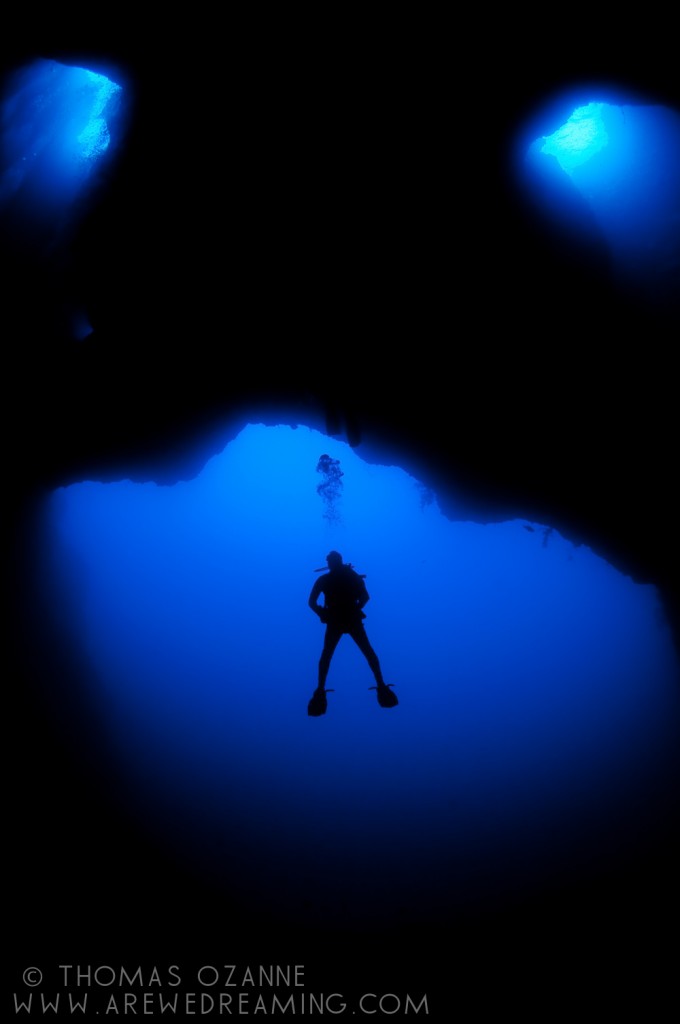 N/C: What is your favourite u/w camera equipment (past & present) & Why?
N/C: What is your favourite u/w camera equipment (past & present) & Why?
TO: Probably top of the list is my Inon 45 degree viewfinder. I had to dive without it once and I was the worst dive of my life. If you buy a DSLR you need to get yourself a magnifying viewfinder of some sort. Craning your neck and squinting through a tiny viewfinder is not going to get you very far.
Secondly I‘d have to say my Tokina 10-17mm fisheye lens. It’s perfect for the way I like to shoot, up close and personal. Super fast to focus and has never missed a beat after being poorly treated for years.
And last but not least would have to be my Subal housings, past and present. They are built like a tanks and just work. No messing around. Thousands of dives and no problems. (Apart from that one time where I wasn’t paying attention during set up and had a slight leak, but that’s totally on me.)
N/C: What would be your advice to anyone new to underwater photography?
TO: Be the best diver you can be. Don’t rush in prioritising the photography if you haven’t nailed your diving, particularly your buoyancy. You’ll stress yourself out, you’ll put yourself and the environment at risk and you will struggle to fully embrace the photography if the diving isn’t second nature to you. That’s it.
Actually there’s more to it than that. Build up lots of diving experience first and then apply the photography. Unfortunately this isn’t always easy, as doing this requires a lot of diving experience that you might not be able to build up if you only dive a handful of times a year. Understandably people want to get on with shooting and maximise every minute of their time under water but I think time spent becoming a good diver will benefit you more in the long run. And without exaggerating too much it could even be the difference between life and death. Diving isn’t an activity to be taken lightly and sadly I see far too many photographers diving like they are invincible. That’s going to bite you in the arse one day.
N/C: What, or who, has been your single biggest inspiration for your underwater photography?
TO: Alex Mustard’s work is a continuing inspiration. He is in a league of his own. Technically and artistically there aren’t many who come close, at least not with his consistency. And Martin Edge’s book was my bible when I started out – I think he owes me some commission for the number of copies I have convinced people they should buy over the years!
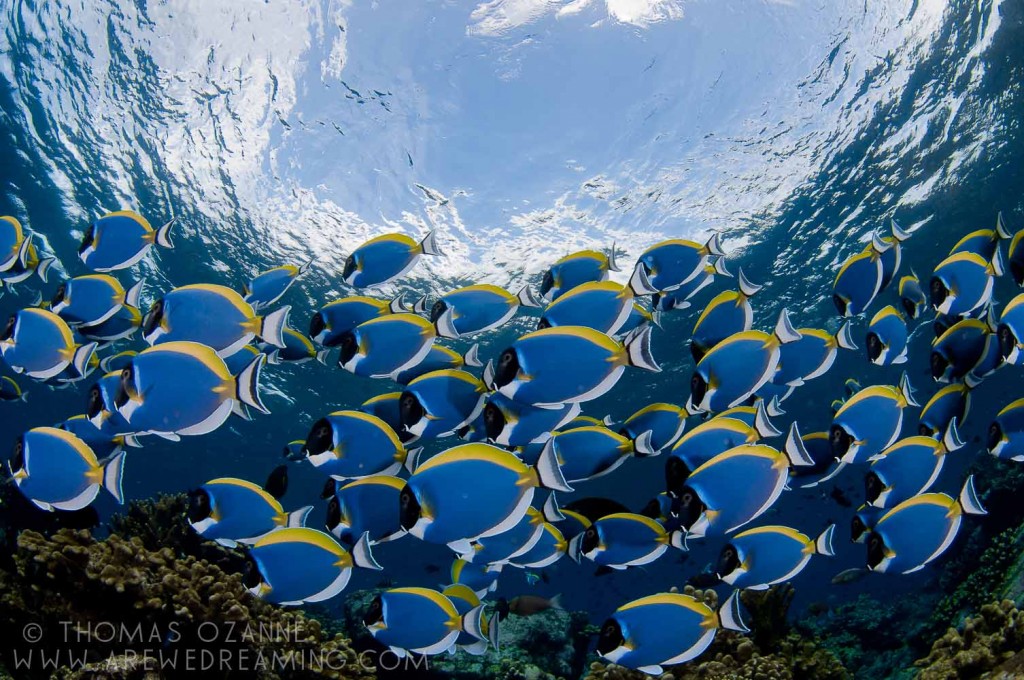
N/C: What are your boundaries on post-editing image manipulation?
TO: I have come to realise that less is more. I never add, and only remove and then only within reason. I don’t use Photoshop, but I think there is a place for it to really polish an image with more control than Lightroom offers. I’m not averse to tweaking the colour of the water column and using dodge and burn techniques with gradients and brushes. And I will not shy away from the spot heal tool to clean up the water column and any of that pesky backscatter, but you are better off learning how to control your lighting than you are spending time clicking away at thousands of sots.
One thing I would say is images need to look natural and balanced. When you are new to post production it’s easy to be a bit heavy handed with your adjustments. I know I was guilty of that when I started. As I have progressed I find myself doing less and less to my images, and I feel this is really the ultimate aim for my photography, to get the shot as best I can in camera and then use the post production to add a final polish to an image. If you spend more time editing images than shooting I think that’s a little back to front. But saying that, skilled use of software to finalise an image is an integral aspect of photography that needs to be embraced. Just be critical of every element of your final image.
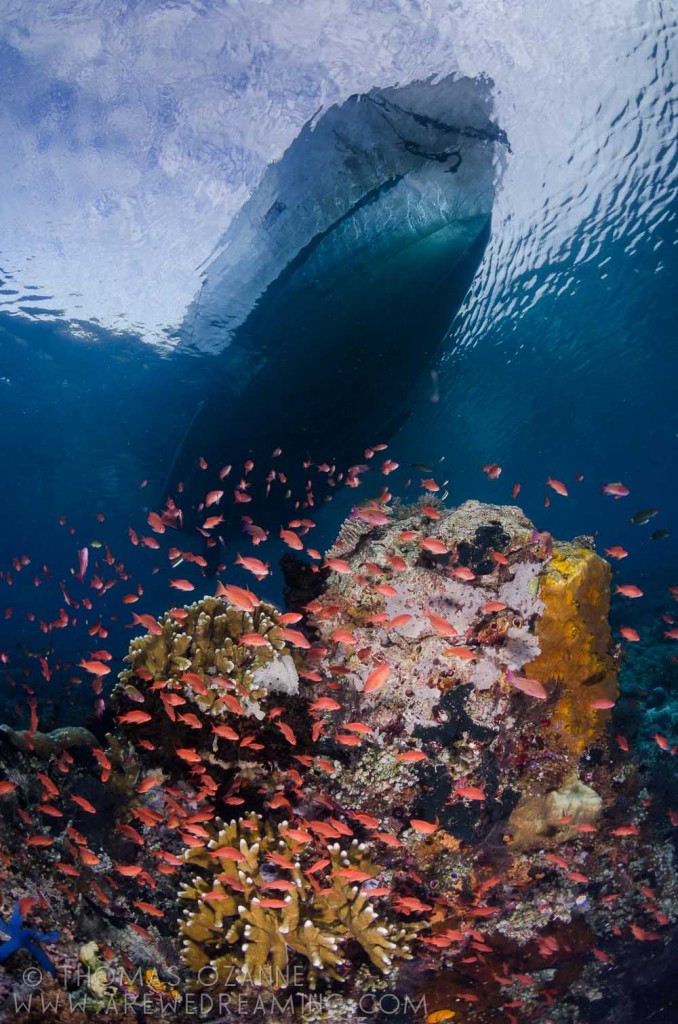 N/C: Where is your favourite dive location, and is it for the photography?
N/C: Where is your favourite dive location, and is it for the photography?
TO: The best diving I have done was in Papua New Guinea. Hands down. Way out in the Coral Sea is an atoll called Easter Fields. It had everything: incredible visibility, amazing pristine corals, huge numbers of schooling fish, and more sharks than I have seen anywhere else (sadly that’s an indictment of the impact humanity has had on sharks more than anything else, in all my diving in Asia I have seen hardly any sharks). And a close joint second comes Palau, Raja Ampat, and Komodo. All incredible places.
N/C: What are you views on marine life manipulation, moving subjects?
TO: Honestly I can’t say that I haven’t encouraged a few creatures to move slightly using a finger or a poker in the past, never actually touching, just corralling gently, but even that is something I have come to feel is unacceptable. I don’t think manipulation has a place in wildlife photography. We are representing nature, and nature doesn’t exist for our convenience. I regularly see shots that most reasonable people could tell are not natural and couldn’t have been achieved without interference. We know the shot must have been gotten with dubious methods, and so does the person that took it, and they have to live with themselves. But then that’s one of the problems isn’t it? Those kind of people just don’t care. They’ll lap up the praise regardless and continue to exploit nature for their own ego.
Over time I have come to realise that my photography is opportunistic. I shoot things that happen in front of me. I don’t want a shot in my portfolio that would never have happened without deliberately interfering with a creature.
That people proudly display such images and even win awards for them occasionally is a shame, and I’m glad that often judges of competitions are hard on an image when this kind of behaviour is suspected. But saying that, some still slip through the net.
N/C: What do you look for when you are making your images?
TO: A nice composition. More than anything else a well composed and structured image is what I look to get. Having complete control of your buoyancy allows you to position yourself in the water column and a decent viewfinder on your housing will allow you to consider every square mm of the frame. One thing that stuck with me from an old teacher of mine was the idea that if something isn’t adding to an image it is taking away. He was referring to design in general but I find is a great thing to keep in mind when shooting images. Everything in your image should be there for a reason. Consider the foreground and the background. Of course there is the subject to consider but don’t forget the horizon, the sun’s position, Snell’s window, the blue gradient of the water, the clouds in the sky, the silhouette of the reef…. all of these elements are yours to control with your positioning in the water. At least for wide-angle they are. For macro it’s all about the subject and a clean or interesting background as something to aim for.
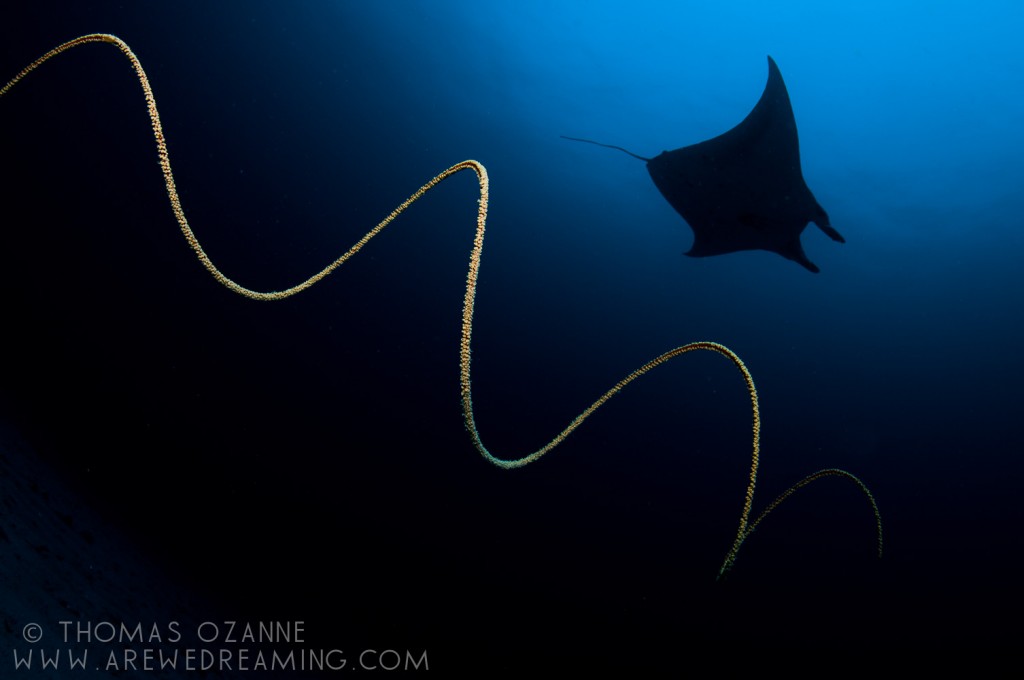
N/C: What motivates you to take u/w photos?
TO: New experiences, and continuously striving to improve my photography. I really enjoy getting wows out of people. And the shots that seem to have that effect are shots that were taken when I myself was thinking “wow, this is so cool”. I love the adventure of diving and the beauty of nature and the skill of good diving and photography and I love that there is always something new to see, something new to learn, and more amazing images to be captured with improved technique.
N/C: If you could photograph any one thing/place what or where would that be?
TO: High on my list is more big stuff, and I guess the ultimate would be whales. A trip to Tonga to meet the humpbacks is calling to me. That and working more with models. I have had some great experiences shooting free divers and intend to do more. I love the sport of free diving and there are some very cool images to be made with the right collaborations.
I just re-read the question and see that you said “any one thing”, so I guess I’ll have to choose. It’s going to have to be whales, isn’t it?
See more of Thomas’ work at www.arewedreaming.com. Find him on Instagram at @arewedreaming
Gear News
Scubapro Free Octopus Promotion 2024

Free Octopus with every purchase of a SCUBAPRO regulator system
Just in time for the spring season, divers can save money with the FREE OCTOPUS SPRING PROMOTION! Until July 31st SCUBAPRO offers an Octopus for free
with every purchase of a regulator system!
Get a free S270 OCTOPUS with purchase of these combinations:
MK25 EVO or MK19 EVO with A700
MK25 EVO or MK19 EVO with S620Ti
MK25 EVO or MK19 EVO with D420
MK25 EVO Din mit S620Ti-X
Get a free R105 OCTOPUS with purchase of the following combinations:
MK25 EVO or MK19 EVO with G260
MK25 EVO or MK17 EVO with S600
SCUBAPRO offers a 30-year first owner warranty on all regulators, with a revision period of two years or 100 dives. All SCUBAPRO regulators are of course certified according to the new European test standard EN250-2014.
Available at participating SCUBAPRO dealers. Promotion may not be available in all regions. Find an authorized SCUBAPRO Dealer at scubapro.com.
More information available on www.scubapro.com.
Blogs
Northern Red Sea Reefs and Wrecks Trip Report, Part 3: The Mighty Thistlegorm

Jake Davies boards Ghazala Explorer for an unforgettable Red Sea diving experience…
Overnight, the wind picked up, making the planned morning dive a bit bumpy on the Zodiacs to the drop point on Thomas Reef. There, we would dive along the reef before descending through the canyon and then passing under the arch before ascending the wall with a gentle drift. The site provided great encounters with more pelagic species, including shoals of large barracuda, tuna, and bigeye trevally.
Once back on the boat, it was time to get everything tied down again as we would head back south. This time, with the wind behind us, heading to Ras Mohammed to dive Jackfish Alley for another great gentle drift wall dive before then heading up the coast towards the Gulf of Suez to moor up at the wreck of the Thistlegorm. This being the highlight wreck dive of the trip and for many onboard, including myself, it was the first time diving this iconic wreck. I had heard so much about the wreck from friends, and globally, this is a must on any diver’s list. Fortunately for us, there was only one other boat at the site, which was a rarity. A great briefing was delivered by Ahmed, who provided a detailed background about the wreck’s history along with all the required safety information as the currents and visibility at the site can be variable.

Kitting up, there was a lot of excitement on deck before entering the water and heading down the shoreline. Descending to the wreck, there was a light northerly current which reduced the visibility, making it feel more like the conditions that can be found off the Welsh coast. At 10m from the bottom, the outline of the wreck appeared as we reached the area of the wreck which had been bombed, as our mooring line was attached to part of the propeller shaft. Arriving on deck, instantly everywhere you looked there were many of the supplies which the ship was carrying, including Bren Carrier tanks and projectiles that instantly stood out.

We headed around the exterior, taking a look at the large propeller and guns mounted on deck before entering the wreck on the port side to take a look in the holds. It was incredible to see all the trucks, Norton 16H, and BSA motorcycles still perfectly stacked within, providing a real snapshot in time.

Overall, we had four dives on the Thistlegorm, where for all of the dives we were the only group in the water, and at times, there were just three of us on the whole wreck, which made it even more special, especially knowing that most days the wreck has hundreds of divers. Along with the history of the wreck, there was plenty of marine life on the wreck and around, from big green turtles to batfish, along with shoals of mackerel being hunted by trevally. Some unforgettable dives.

The final leg of the trip saw us cross back over the Suez Canal to the Gobal Islands where we planned to stay the night and do three dives at the Dolphin House for the potential of sharing the dive with dolphins. The site, which included a channel that was teeming with reef fish, especially large numbers of goatfish that swam in large shoals along the edge of the reef. These were nice relaxing dives to end the week. Unfortunately, the dolphins didn’t show up, which was okay as like all marine life they are difficult to predict and you can’t guarantee what’s going to be seen. With the last dive complete, we headed back to port for the final night where it was time to clean all the kit and pack before the departure flight the next day.

The whole week from start to finish on Ghazala Explorer was amazing; the boat had all the facilities you need for a comfortable week aboard. The crew were always there to help throughout the day and the chefs providing top quality food which was required after every dive. The itinerary providing some of the best diving with a nice mixture of wreck and reef dives. I would recommend the trip to anyone, whether it’s your first Red Sea liveaboard in the Red Sea or you’re revisiting. Hopefully, it’s not too long before I head back to explore more of the Red Sea onboard Ghazala Explorer.

To find out more about the Northern Red Sea reef and wrecks itineraries aboard Ghazala Explorer, or to book, contact Scuba Travel now:
Email: dive@scubatravel.com
Tel: +44 (0)1483 411590
Photos: Jake Davies / Avalon.Red
-

 News3 months ago
News3 months agoHone your underwater photography skills with Alphamarine Photography at Red Sea Diving Safari in March
-

 News3 months ago
News3 months agoCapturing Critters in Lembeh Underwater Photography Workshop 2024: Event Roundup
-

 Marine Life & Conservation Blogs2 months ago
Marine Life & Conservation Blogs2 months agoCreature Feature: Swell Sharks
-

 Blogs2 months ago
Blogs2 months agoMurex Resorts: Passport to Paradise!
-

 Blogs2 months ago
Blogs2 months agoDiver Discovering Whale Skeletons Beneath Ice Judged World’s Best Underwater Photograph
-

 Marine Life & Conservation2 months ago
Marine Life & Conservation2 months agoSave the Manatee Club launches brand new webcams at Silver Springs State Park, Florida
-

 Gear Reviews3 months ago
Gear Reviews3 months agoGear Review: Oceanic+ Dive Housing for iPhone
-

 Gear Reviews2 weeks ago
Gear Reviews2 weeks agoGEAR REVIEW – Revolutionising Diving Comfort: The Sharkskin T2 Chillproof Suit



